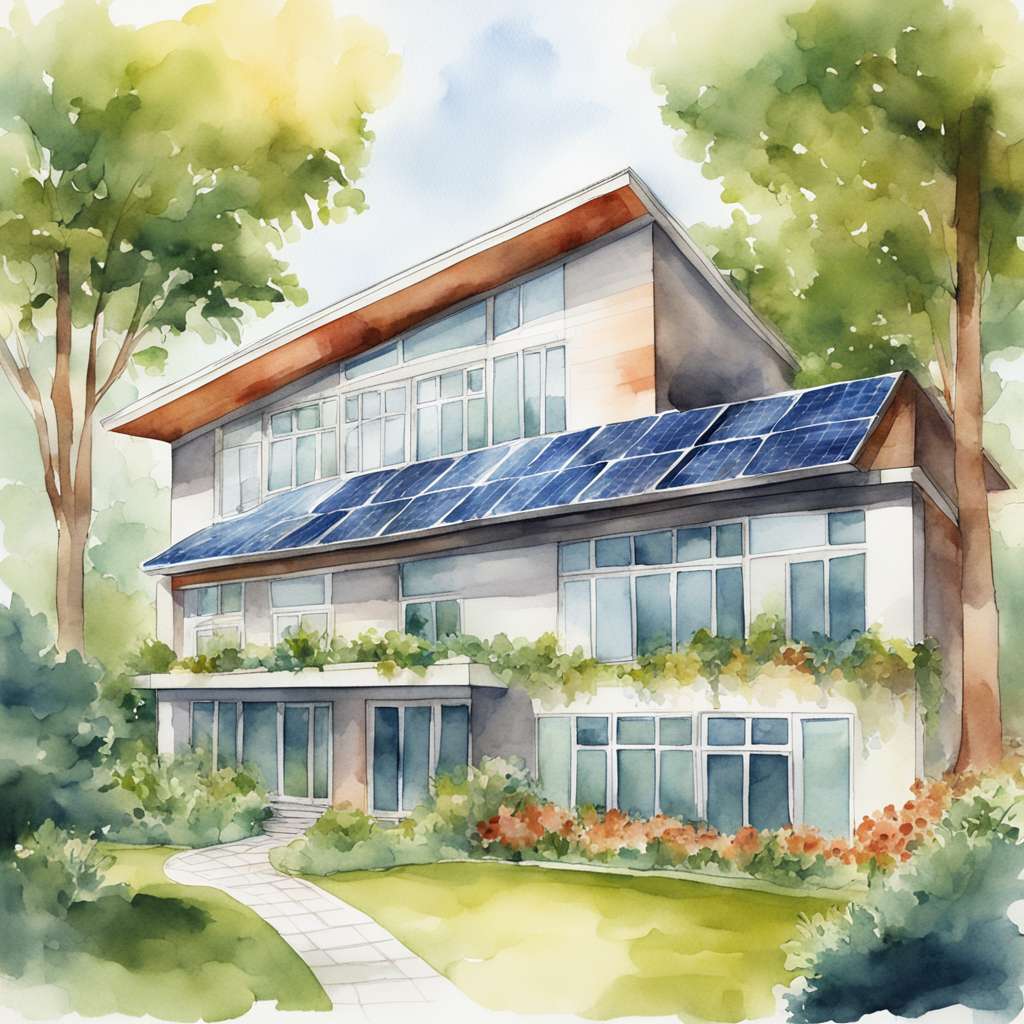
How electrifying buildings can cut energy consumption by 75%
- Buildings consume 75% of the electricity generated in the U.S.
- Increasing energy efficiency could reduce the grid's load by more than 150 GW.
- Heat pumps can fulfill 90% of global heating requirements more carbon-efficiently than gas-fired boilers.
- Production of a 50-story skyscraper demands over 60,000 tons of cement, releasing 42,000 tons of CO2.
Electrifying Buildings: A Path to a Sustainable Future
Electrification is at the forefront of transitioning towards a sustainable future. Buildings, which consume more than 20% of the world’s total energy supply, are a significant focus of this transition. With anticipated growth in global energy demand for buildings by 42% within the next three decades, it’s vital to consider how we can shift our current buildings to more efficient, cleaner energy usage and adopt sustainable practices in construction.
- 🌟 A transformative step towards sustainability is electrifying buildings......
- 🤔 Is the high cost a barrier to widespread adoption?......
- 🔍 What about the overlooked impact on material suppliers?......
Making Existing Buildings Less Carbon-Intensive
Building stock changes very slowly, with only about 5% of the total building stock in the U.S. constructed every year. As a result, the majority of current buildings need to be retrofitted to effectively reduce carbon emissions immediately. Cutting down on electricity usage and fossil fuel dependency are the quickest methods to lower buildings’ carbon emissions.
*Energy Efficiency
Throughout the U.S., out of the amount of energy consumed in residences, electricity accounts for approximately 25%, while it involves more than 50% in commercial premises. Overall, buildings consume 75% of the electricity generated in the U.S. Implementing energy-saving building technologies, including but not limited to efficient appliances, LED lighting, and load management systems, can reduce the grid’s load by more than 150 GW. By enhancing building efficiency, we can restrict total electricity consumption and subsequently diminish the reliance on carbon-intensive energy generation methods.
However, convincing residential and commercial building owners to adopt energy-saving measures is challenging. Divergent priorities among stakeholders introduce complexities into the sales process. Energy efficiency solutions need to have a payoff period of less than nine months, and the service must be assured. Additionally, the building market is highly fragmented, making it difficult to secure customers on a building-by-building basis.
Electrifying Building Systems
Another method to diminish direct fossil fuel use is to electrify heating and cooling systems in buildings and power them via renewable sources. For instance, heat pumps present an energy-efficient, entirely electric substitute for air conditioners and furnaces. Using just one kWh of electricity, heat pumps can transport three to six kWh of thermal energy for heating or cooling. The IEA reports that heat pumps could fulfill 90% of global heating requirements more carbon-efficiently than gas-fired boilers.
Nonetheless, the economics factor largely dictates their adoption. To attain net-zero emissions by 2050, it is necessary to install at least 18 million heat pumps per year, yet, only 10 million were sold in 2021. The lengthy payback periods and relatively higher costs are currently obstacles to greater adoption. The capital intensity of heat pumps presents a challenging value proposition for most residential and commercial building owners prioritizing immediate financial gains.

Decarbonizing Building Construction
Inelasticity of Materials
Increasing electrification necessitates substantial amounts of construction materials. Suppliers of materials like conduit, cable, electronics, and solar panels must significantly increase production to meet the rising demand for electrification initiatives. However, many suppliers operate as inelastic manufacturing and distribution firms and are currently not equipped to handle the surge in demand.
Reducing the Carbon Intensity of Construction
Lowering the carbon footprint of both construction processes and materials will be key in achieving higher efficiency in new buildings. Essential materials such as cement, steel, and aluminum, required for constructing new buildings, are typically produced in highly carbon-intensive furnaces or kilns. For example, the production of cement, critical for construction, substantially contributes to CO2 emissions, with a 50-story skyscraper demanding over 60,000 tons of cement and releasing 42,000 tons of CO2 during manufacturing.
A potential solution is carbon capture technology. Enterprises like CarbonCure Technologies are infusing recycled CO2 into concrete directly at construction sites. Additionally, other technologies aim to decrease the quantities of cement and additional materials consumed in construction. Converge.io, for instance, is embedding intelligent sensors in concrete slabs to monitor temperature and strength during curing, optimizing cement use and saving time, money, and emissions.
Building Electrification in Los Angeles
All-Electric Homes
Switching homes and businesses to all-electric is a significant element in California’s strategies to curb greenhouse gas emissions. Electrification can slash GHG emissions in homes by up to 60% by 2020 and possibly by 90% by 2050. In addition, residents in electric-only homes can avoid indoor air pollution that arises from burning fossil fuels within a confined space.
Zero Net Energy Homes
Homes that achieve a balance between the energy they produce and consume, solely through electric means, are known as zero net energy homes. Accessible case studies detailing floor plans and energy strategies highlight the efforts to transform residential properties in Los Angeles, reducing their carbon footprint substantially.
Electrification in Washington, DC
For Washington, DC, building electrification is critical to meet the Clean Energy DC Plan’s objectives of achieving carbon neutrality by 2050. This Plan suggests revising the District’s building codes to mandate that all new construction be net-zero energy and 100% electric. Multiple decarbonization routes are viable today, making the vision of building decarbonization increasingly attainable for property owners.
- International framework for cooperation and networking on heat pumping technologies
- Official report on US Building Stock Characterization Study by National Renewable Energy Laboratory
- International Energy Agency's official page on building energy systems, providing data and insights on energy consumption and efficiency in buildings
- Official government site for energy efficiency in buildings and industry
Trending now








